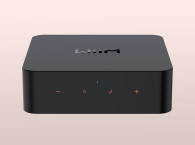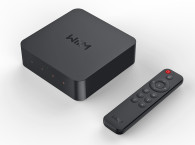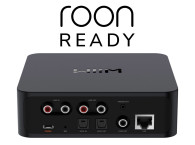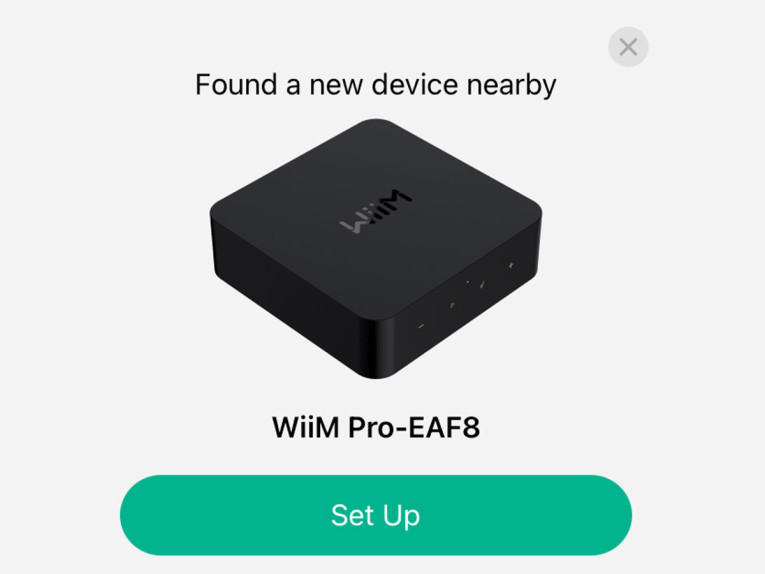
Around my house, a higher energy veneer overlays everything around us, an invisible one of modulated RF. It is this all but ubiquitous 2.4GHz and 5GHz WLAN network that Linkplay Technology taps into for its convenient and inexpensive WiiM Pro music streamer.
The WiiM Pro, a lightweight rectangle of black plastic that is smaller than a mac mini, is powered by the soon-to-be-universal USB-C standard. A bit surprising at this price, a USB-C wall wart is included in the package, as is a 1m POF interconnect for AES-3 optical and a two-channel RCA–to–RCA interconnect for analog. The brain of the product is a versatile and efficient Arm Cortex-A53 64-bit SoC with access to 512k each of DRAM and flash memory for buffered gapless playback.
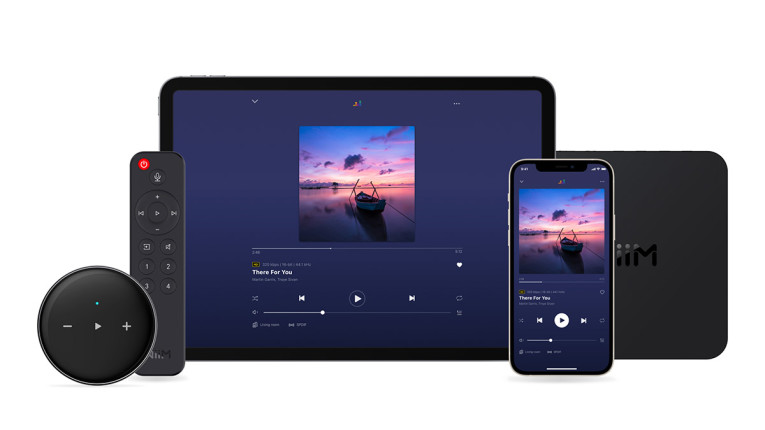
WiiM Pro supports all common streaming audio standards and services, including Spotify, iHeartRadio, Tidal, Amazon Music, SoundCloud, Qobuz, Pandora, Radio Paradise, vTuner, Deezer, and Napster. Speaking of Apple and Android, configuration and operation for the WiiM Pro is mediated via a cross–platform app, WiiM Home, that acts as a full featured remote. It also supplies unified search across all supported music services. Wireline I/O encompasses stereo line in and out on RCA, plus digital audio out on AES-3 optical and coax. A 12V trigger input allows for legacy amplifier control, and an RJ45 completes the mix for old skool wired networking. A multicolor LED supplies status feedback and capacitive transport control and volume buttons provide rudimentary command directly from the device. Incoming analog is digitized for broadcast at up to 96kHz, while digital from the AES inputs or the app is supported at up to 4× or 96k. Streaming protocols include AirPlay 2, Chromecast Audio, DLNA, Spotify Connect, TIDAL Connect, Amazon Music Casting, and Roon.
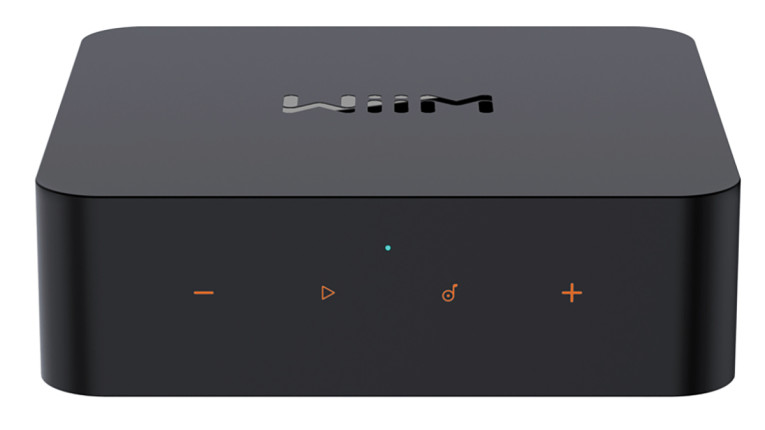
Setup
The WiiM Home app certainly is full featured and makes the setup experience quite painless. For this review, I received a pre-production model in non-branded packaging. The first WiiM Home version I installed on my ancient and trusty iPhone SE was like many other “convenience” apps for remote piloting a consumer appliance. It was a bit hard to use, there were gaps in the functionality, and some of the labeling and explanatory text was awkward or incomplete. I fired off a note to the folks at Linkplay with my observations, and all my complaints were addressed in the next revision.
The WiiM Pro uses Linkplay’s A98MG SoM (System on Module), powered by an Amlogic A113X 1.5GHz quad core ARM processor, which supports IEEE 802.11 b/g/n/ac single and dual band (2.4GHz and 5GHz, A98), along with Bluetooth connectivity (BT5.0 with EDR and BLE). The built–in DAC featuring Texas Instrument’s high precision, low jitter Burr-Brown PCM5121 supports up to 384kHz/32-bit audio with a 106dB SNR and 0.005% THD+N. Along with 23 factory graphic EQ presets plus one custom memory register for a user setting, there is automatic and manual sync for A/V or multiroom installations. The WiiM ecosystem can achieve less than 150µS synchronization accuracy among physically separate speakers if the speakers are on the same wireless network.
Connected receivers or speakers may have different audio path latency due to different hardware, software, and DSP processing. To maintain the synchronization of each system, WiiM measures the audio path delay automatically. By leveraging a built-in microphone and proprietary algorithm, the entire audio path latency is measured and compensated automatically. The latency value is used to maintain audio sync in wireless multi- room playback with Apple HomePod, Amazon Echo, Google Home, and other WiiM devices. Manual audio compensation can also be dialed in for custom delay.
Individual EQ settings can be assigned to each source, such as Bass Boost for the analog in or Bluetooth. Though I have yet to personally see a need, the app does allow for voice command with Siri, Alexa, and Google’s Voice. The app has 12 music preset slots, allowing you to save your favorite station, playlist, album, etc., and access them with the preset button on the Pro or remote, or by using the app.
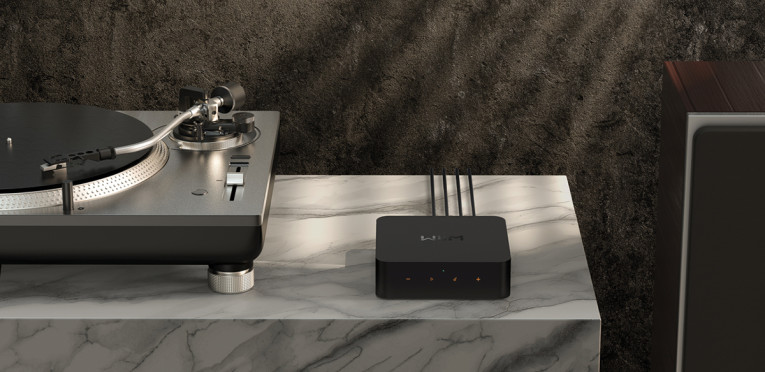
Although a printed user guide is included, the downloadable PDF manual states that “…WiiM Pro can be grouped with (Apple) Homepod, (Amazon) Echo, Google Home, AirPlay 2 enabled devices… Alexa-compatible devices, or another WiiM Mini ($79) or Pro to stream music throughout your home. Or play different songs in different rooms. With its digital and analog inputs and outputs, WiiM Pro works with your existing stereo system.” The WiiM Pro also supports QPlay 2.0, which is used specifically in China by Tencent QQ Music. That’s where the “Q” comes from, and is an “improved” DLNA protocol, according to LinkPlay. I had no trouble modernizing my bedroom TV’s audio rig, an old Pioneer AVR and even more elderly a/d/s L200 speakers I had built up while I worked there. The stereo replaces the super crappy in–built audio that’s part of our small Samsung smart TV.
With WiiM Pro on duty, I was able to stream pleasantly EQ’d Qobuz while tidying up, reading in bed or as background noise while snoozing. Same goes for our ward Max, who currently has the only vinyl rig in the house. That setup consists of an ancient Onkyo receiver paired with another, larger pair of a/d/s speakers. In this instance, they are a set of custom three-ways employing hand-selected examples of their 800 series drivers and crossover. Both systems are capable and pleasant but lack the modern conveniences of streaming and Bluetooth access. WiiM to the rescue!
WiiM Pro also offers an endpoint for Bluetooth 5.1 streaming. LinkPlay stealthily powers another lifestyle audio fixture in my home, Cleer’s stylish and good sounding CRESCENT smart speaker. Since the day I received it, I have been unable to convince CRESCENT to play from my preferred streaming service via Bluetooth. After way too many attempts at configuring Qobuz with the “aid” of Cleer’s tech support, I simply gave up using Bluetooth. During this WiiM review, the user manual suggested that, for the best AirPlay 2 experience, Apple users employ a simple HomeKit–based setup. After adding Apple’s Home app for iOS to my phone, CRESCENT miraculously appeared as a Bluetooth target. Frankly, I was amazed but, on reflection, really shouldn’t have been as Linkplay’s expertise in streaming audio software and hardware, provides turnkey solutions for big brands such as Harman, JBL, Yamaha, Marshall, and Edifier.

About WiiM Pro
LinkPlay CEO Lifeng Zhao stresses their focus on solutions, not just products. “Linkplay’s traditional business model is and will continue to be a turnkey solutions provider. The WiiM line of products are being developed to take advantage of the various technologies we deploy into solutions we can control and bring to market.”
Making it easy to use for everyone is very challenging. Being a network–first product, it always needs to work with the user’s network environment, regardless of configuration. “Ultimately, WiiM Pro’s performance will be heavily affected by the end user’s network environment.” Another aspect I appreciate is their Continuous Quality Improvement (CQI) approach to their offerings, such as periodic Over-the-Air (OTA) updates. “All products get updated based on our continued and never-ending push for the best UX in the market.” Amen.
At $149, the WiiM Pro is neither the least nor most expensive entry-level streamer on the market. What does distinguish it from the competition is that the price is low while, overall, the UX and functionality are excellent. LinkPlay designs its devices to interoperate seamlessly with a customer’s existing gear, bringing the best possible user experience. Linkplay’s design anticipates that, when things do go wrong, the product performs self-diagnostics and provides suggestions for the user to improve their network environment automatically.
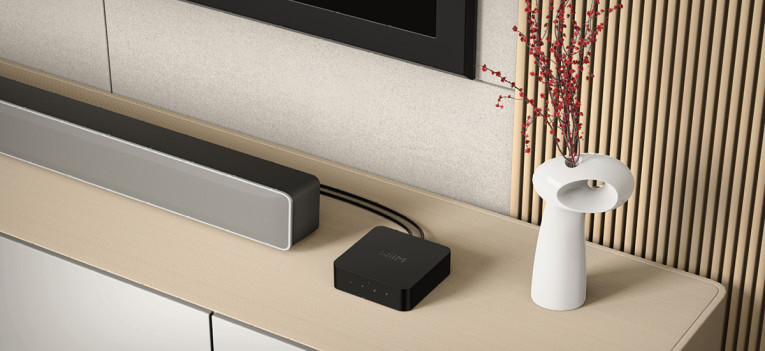
The folks at Linkplay have really done their homework to make what could be a frustrating techno nightmare simple and straightforward. The app even warns you when Wi-Fi signal strength is weak, politely suggesting you “…please keep it close to the router.” WiiM Pro even updates automatically, just after midnight, when connected to your Wi-Fi network.
For $50 less, Linkplay offers the WiiM Mini, which lacks a few features including Ethernet, AES-3 optical in, and Google integration. Less onboard memory and a wimpier SoM contribute to the cost reductions. Still, WiiM Mini is an excellent and crazy cheap way to smarten up your audio game while its still low cost and feature-packed WiiM Pro big brother is an excellent way to either unify existing systems and smart speakers around your home or repurpose an old AVR, receiver or integrated amp plus speaker pair you probably have gathering dust.
Trust Linkplay to keep its products fresh. As the company says, “All the music services we support are always evolving…(along with) the feedback from users. We make continual changes to improve the user experience.” For more information, visit:
https://wiimhome.com/WiiMPro/Overview
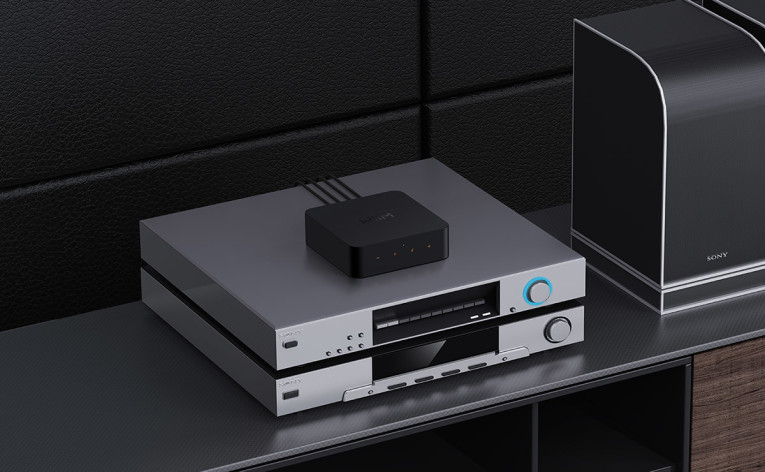
WiiM Pro Music Streamer — The Measurements
By Stuart Yaniger
The kind folks at WiiM sent a WiiM Pro unit for me to run electrical tests in parallel with Oliver Masciarotte’s use and listening review. When I unpacked the unit, I was somewhat surprised at its light weight and, frankly, cheap feel. It’s visually attractive despite the all-plastic exterior, but it’s not audiophile eye-candy by any means. Still, there’s a lot of functionality per dollar here, so visual and tactile esthetics can be forgiven.
I installed the WiiM Home app on my iPhone, then used it to connect the WiiM Pro to my home network. The installation went exactly as described in the instructions and everything operated smoothly with my usual streaming source (Amazon HD) and my Network Attached Storage. The front touch panel switches were reliable and responsive. The streamer functionality in my system was flawless, and the app was intuitive and slick, easily the equal of other much more expensive systems I’ve used.
After using the WiiM Pro for a few weeks, I put it on the bench for basic measurements, which were a mixed bag. The data here was acquired using an Audio Precision APx525 analyzer. Given my positive user experience, it was unsurprising that the SPDIF and streaming sections measured quite well. For SPDIF I/O, I used optical cable. The spectrum of a 2kHz sine wave at 0dBFS with both optical in and optical out is shown in Figure 1.

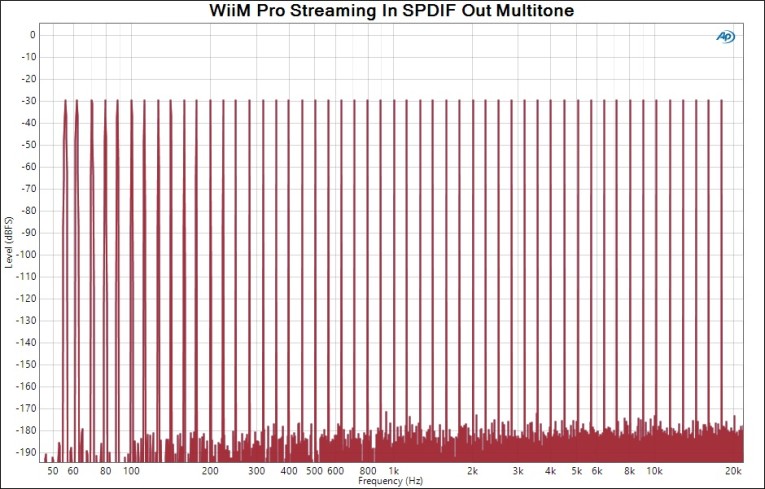
The sample rate for this signal was 96k. Using the streaming function, I input a multitone signal and looked at the SPDIF output (Figure 2), which was essentially perfect both with respect to distortion and flatness of frequency response. Moving to the analog outputs, a 0dBFS SPDIF input gave a 2V output from the line out, which may be adequate for directly driving some but not all power amplifiers. For this use case, the user has a choice between a higher gain power amp or inserting a preamp or gain stage between the WiiM Pro’s output and the power amp — this of course comes at a cost.
With an SPDIF input at 0dBFS and analog output with volume turned up to full, a 2kHz sine wave gives the spectrum shown in Figure 3. The most significant harmonic component is the second at -91dB in the worse channel and -96dB in the better one. Higher-order harmonics remain below -100dB. This is not state-of-the-art performance, but more than adequate to achieve sonic transparency. A more complex multitone signal streamed to the WiiM Pro via WiFi gives the spectrum shown in Figure 4.
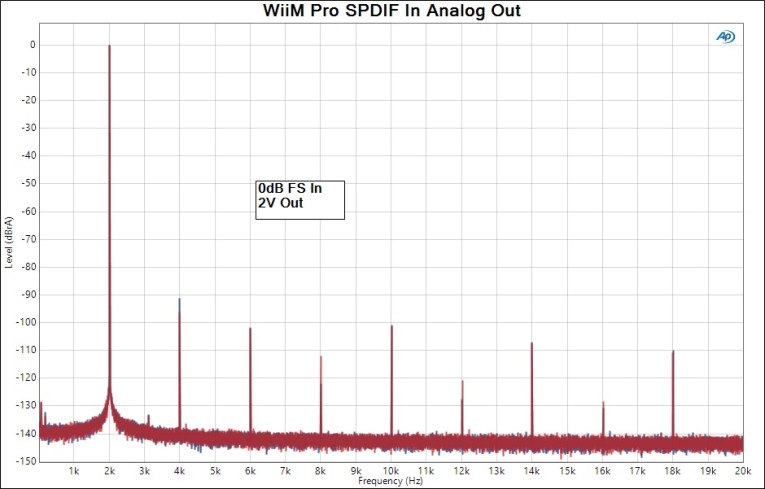
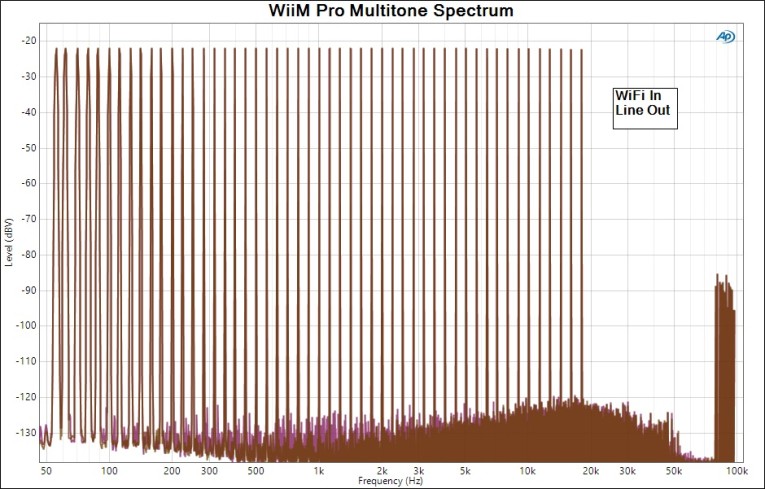
Distortion in the audio band between the frequency components is below -120dB, which is quite good. Interestingly, the analog outputs show some ultrasonic hash near 100kHz at -85dB. This is not likely to cause any issues in actual use. Figure 5 shows the dependence of distortion on frequency with optical SPDIF input and line level analog output, not state of the art for 2023 but is low enough to cause any audible issues.
Other than low output voltage, the performance as a streamer or with SPDIF inputs is very good and the WiiM Pro will not be the audibly limiting factor for any system using it in this manner. All is not as delightful using the analog inputs. Gain from Line In to Line Out measured slightly less than 6dB at the maximum volume setting. Figure 6 shows distortion versus input level; the WiiM Pro goes into severe clipping at input levels above 1V, corresponding to output levels of slightly under 2V. This will be a problem with most modern sources like DACs, which will typically output 2V to 4V at full scale. If a source has a variable output, it needs to be turned down accordingly to avoid overload. For sources with fixed outputs, overload and clipping may very well be a problem unless a pad or attenuator is added to the signal path.


Another issue with the analog I/O is a little more difficult to fix and can be seen in Figure 7 — there is an interchannel phase error, which is actually a constant time delay of about 25μs. This does not happen with the SPDIF or streaming inputs (Figure 8), and it was something I didn’t hear in my use of the WiiM Pro as a streaming device, so it’s clearly caused by something in the ADC section. In theory, the user can compensate for this flaw by moving one speaker a few inches closer, but there’s really no reason that something like this should be seen in a product in the modern era.
Overall Thoughts
From the measurements, I would be happy to use the WiiM Pro with digital sources or streaming, where its performance ranged from very good to excellent. My only caveat there would be the somewhat anemic 2V maximum from the analog line output. The issues with the analog inputs are concerning enough that I would be hesitant to use it in those scenarios. Considering the very good performance with digital inputs, this was a bit surprising and disappointing. aX

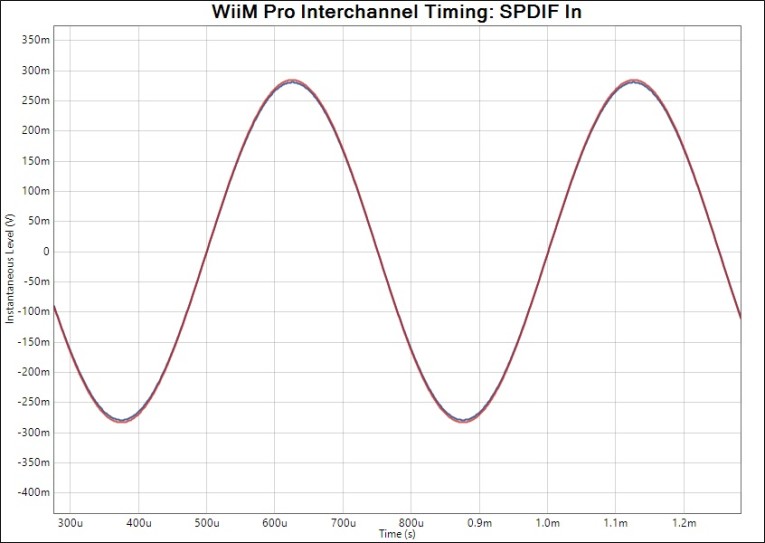
UPDATE: In August 2023, Linkplay launched the WiiM Pro Plus, an upgraded version of the WiiM Pro audio streamer, introducing a premium AKM DAC and reviewing the analog audio circuits for improved audio quality.




